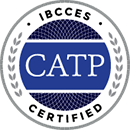
30+ Nationalities
More than thirty different nationalities of students study at Livingston American School.

21 Years in China
SLAS celebrates over 2 decades of providing outstanding education in Shanghai.

Extensive Library
Extensive collection of age appropriate books in our Primary & Secondary libraries

Bus Service
We offer a bus service to all students living in Shanghai. Pick-up and drop-off included.Schedule and Fees →






















